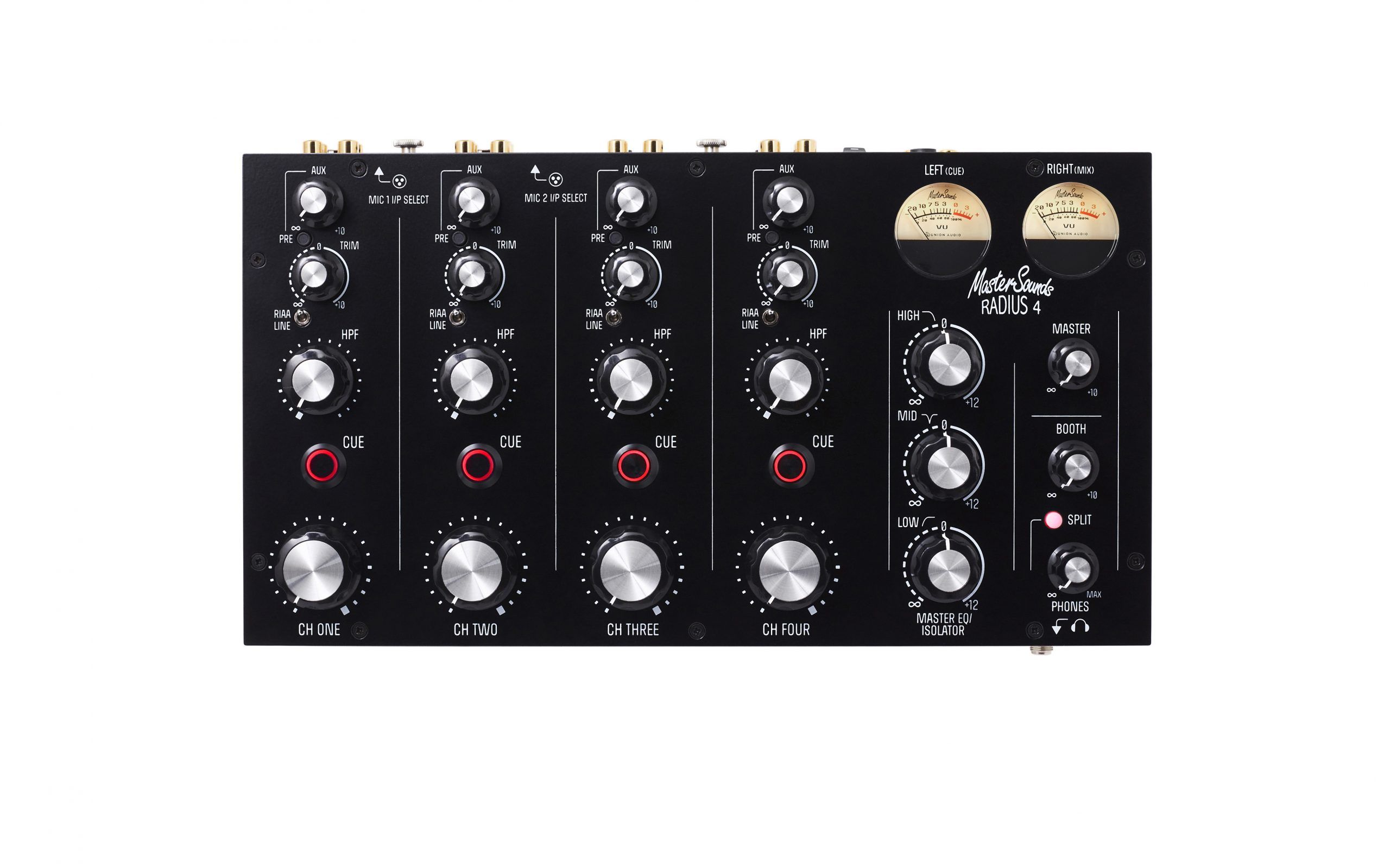The UK-based mixer-maker and audiophile favorite MasterSounds has a small piece of joy to brighten up DJs’ days. They’ve released the third generation of their Radius 2 and Radius 4 mixers, and have adjusted their price points to cater to artists with a lower spending budget (especially now).
These mixers are homegrown, too—MasterSounds mixers are hand-built by Andy Rigby-Jones, a legendary audio engineer that was once the Lead Designer and driving force behind Allen & Heath’s Xone mixer family.
Radius rotaries enter their third generation – what’s new?

If you’re unfamiliar, the Radius 2 is a rotary mixer first released back in 2016 as a two-channel mixer. It was quickly followed with the release of the four-channel Radius-4. The latest version of these mixers now comes with a number of welcomed feature updates, including:
- A dynamic, crisp, and clear sound heard through both RIAA and LINE inputs
- A master EQ/Isolator, an FX unit, and high-pass filters for each channel
- An AUX send & return system that lets you easily integrate external effects
- 2 mic inputs (on the Radius 4 only)
A Welcomed, Realistic Price Point
We were excited to see that these new models are actually in the more affordable range—particularly for the numerous artists that have lost so much of their income because of COVID-19. The Radius 2 sits at £799 (roughly $874 USD), where the Radius 4 can be grabbed for £1089 ($1,191 USD).
Ryan Shaw, MasterSounds’ founder, explained:
“Four years on, and the brand has seen remarkable growth but the higher production costs of a premium rotary mixer rule them out for DJs on a tighter budget. Designer, Andy Rigby-Jones, and I decided to do something about it, by redesigning the compact Radius 2 and Radius 4 to make them more affordable but without compromising any of the features, the feel, or the audio fidelity of the original model.”
The lowered price point is thanks to a new resigned by Rigby-Jones and the MasterSounds team that simplified the circuity without hurting the performance levels. He dives into the level of detail they used to revamp the products, explaining examples such as how “the Split Composite Passive RIAA stage remains identical to the previous generation, but we have simplified the post-fader circuitry.” Rigby-Jones also shares that the most prominent change made was “to the internal construction and PCB board shapes, where we have optimised them for maximum efficiency through our in-house fabrication plant which has made them a lot easier to manufacture.”
Both the Radius 2 and 4 are small and easy to transport in case you’re moving it from home, to studio, to clubs and beyond— so it’s definitely an investment worth considering, especially at this price point. We appreciate the thought put into the these product updates by the MasterSounds team that opens up the Radius experience in a budget-friendly way.
You can check out the full range of models and make a purchase here.





